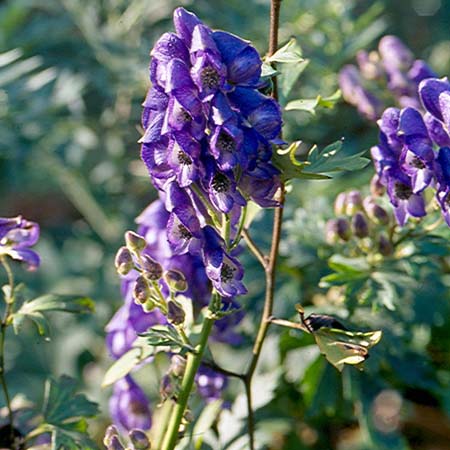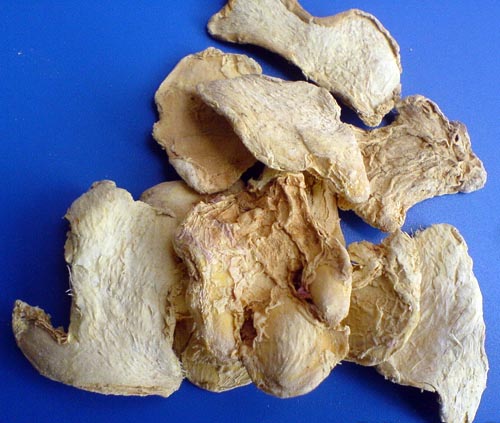The source is from the root of Aconitum carmichaeli Debx., family Ranunculaceae. The medicinal material is mainly produced in the areas of Sichuan, Hubei, and Hunan, etc.. Collected from the last ten-day period of June to the first ten-day period of August, and they are soaked and processed into salty, black, white, bland and soaked aconiti.
Medicinal Properties:
Pungent and sweet in flavor, hot in nature, toxic and attributive to the heart, kidney and spleen meridians.
Actions:
Recuperate the depleted yang for resuscitation, supplement fire and strengthen yang, expel cold to relieve pain.

Application
It is used for yang exhausion syndrome. It is an essential medicine for the treatment of yang-exhaustion syndrome manifested as clammy perspiration, faint breath, cold clammy limbs, indistinct and faint pulse, it is usually used in combination with Ganjiang (Rhizoma Zingiberis) and Gancao (Radix Glycyrrhizae ), such as Sini Tang (Decoction); for exhaustion of qi due to yang-deficiency, it can be combined with Renshen (Radix Ginseng) to supplement qi to prevent prolapse of qi such as Shen Fu Tang (Decoction).
It is used to treat all syndromes of yang deficiency type. For insufficiency of kidney-yang with impotence, co1d and painful waist and knees, and frequent micturition, it is usually combined with Rougui (Cortex Cinnamomi ), Shanzhuyu ( Fructus Corni ), and Shudihuang (Rhizoma Rehmanniae Praeparatae ), etc., such as Yougui Wan (Pill); for insufficiency of spleen-yang and kidney-yang and interior domination of cold and dampness with coldness and pain in epigastric abdomen, loss of appetite and diarrhea, it is combined with Dangshen (Radix Codonopsis ) , Baizhu ( Rhizoma Atractylodis Mazrocephalae), and Ganjiang (Rhizoma Zingiberis ), etc. for yang deficiency resulting in edema, and dysuria, usually used together with Baizhu (Rhizoma Atractylodis Macrocephalae), Fuling (Poria) and Shengjiang ( Rhizoma Zingiberis Recens); for exogenous affection due to yang-deficiency, combined with Mahuang (Herba Ephedrae); for spontaneous perspiration due to yang-deficiency, combined with Huangqi (Radix Astragali).
It is used to treat all pain syndromes of cold type. For arthralgia of wind-cold-dampness type, pain of general joints due to domination of cold and dampness, it is combined with Guizhi ( Ramulus Cinnamomi ), Baizhu (Rhizoma Atractylodis Macrocephalae ) and Gancao (Radix Glycyrrhizae); for abdominal pain due to cold accumulation and qi stagnation, combined with Dingxiang ( Flos CaryophyUi ), Gaoliangjiang ( Rhizoma Alpiniae Officinarum ) , etc..

Usage and Dosage:
3 - 15 g is used in decoction for oral use and decocted at first for about a half to one hour until its narcotico-pungent taste is lost when its decoction is tasted by mouth.
Notes:
Contraindicated in a case with yin-deficiency leading to hyperactivity of yang and pregnant women because of its pungent, hot, dry and violent properties. It is incompatible with Banxia ( Rhizoma Pinelliae ), Gualou ( Fructus Trichosanthis ), Beimu (Bulbus Fritillariae), Bailian (Radix Ampetopsis ) and Baiji ( Rhizoma Btetillae). It must be soaked for oral use, decocted for a long time, and over dosage and long administration must be avoided.







